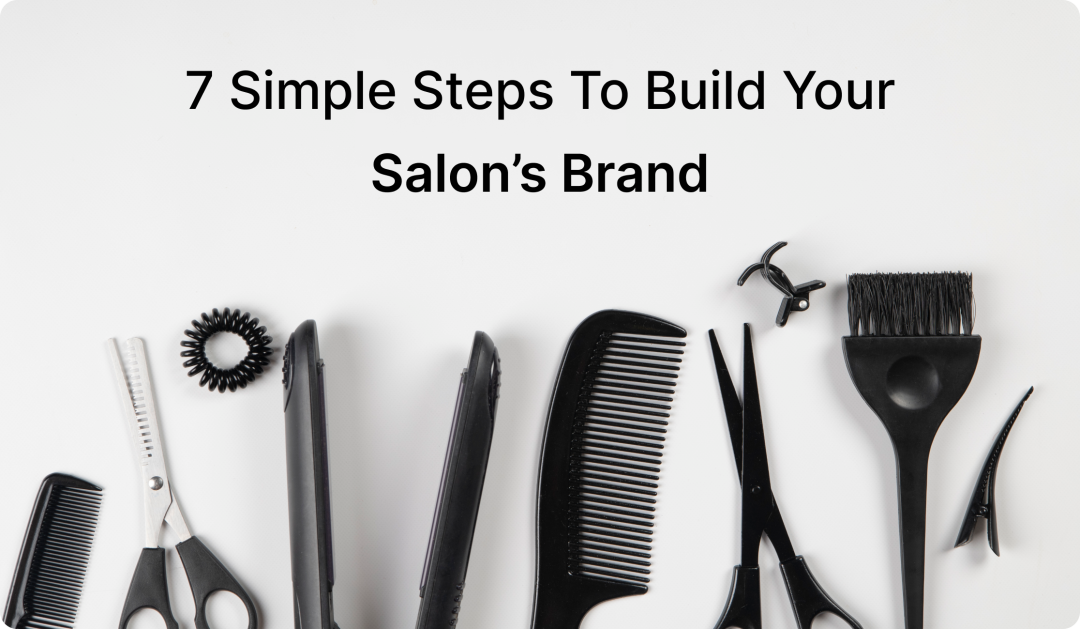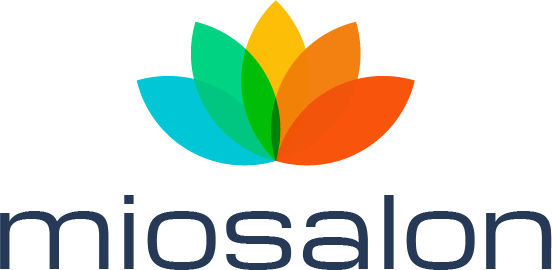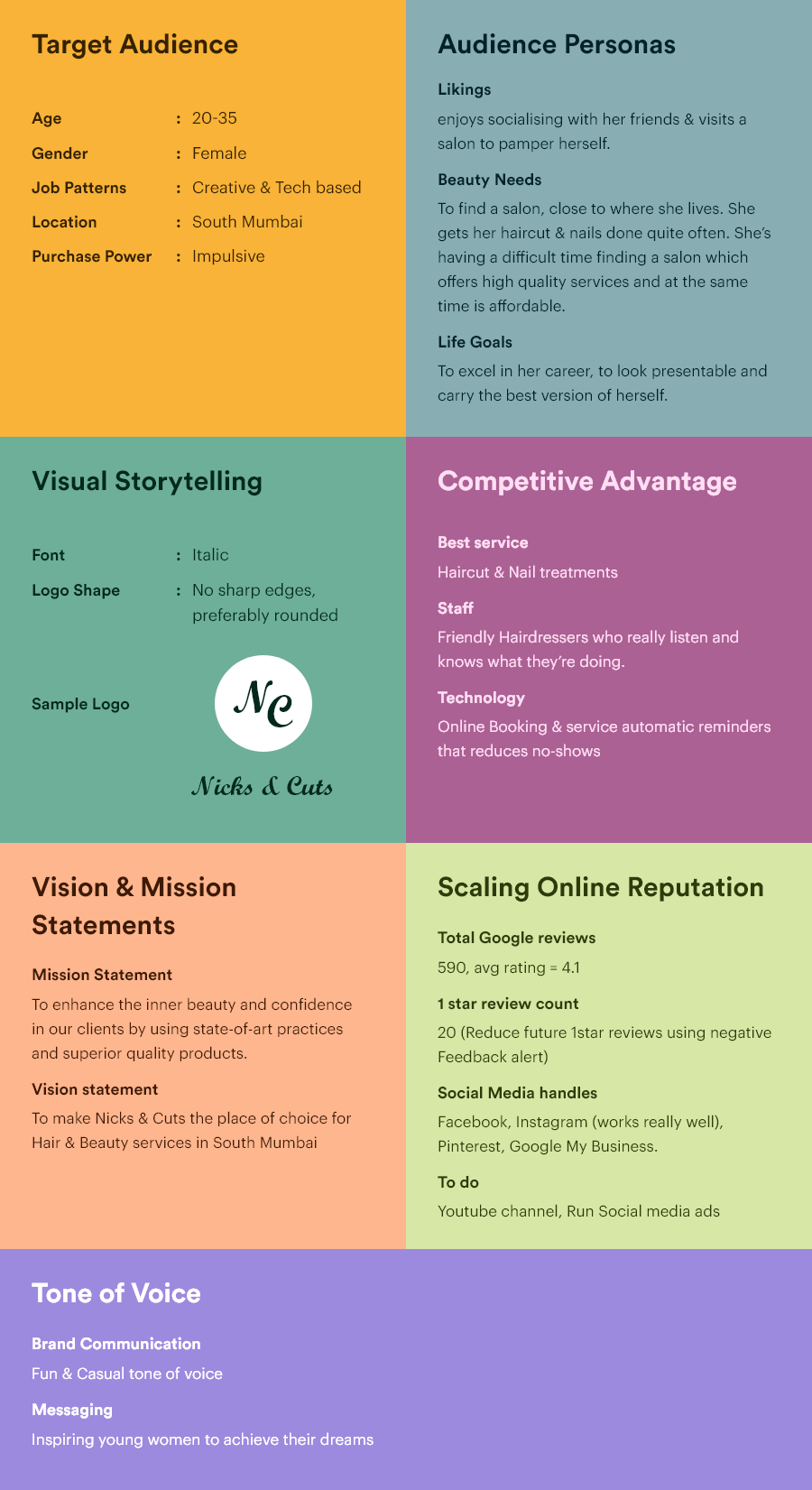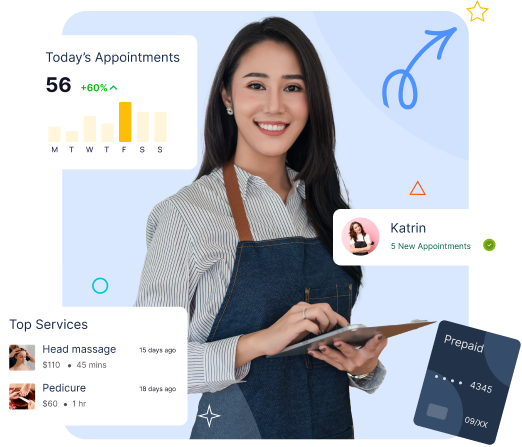7 Simple Steps to Build Your Salon’s Brand

Today, the business world is more competitive than ever. The competition is fierce and if you want to stand out, you need to be pretty-darn good. The starting point is having a clear brand strategy. As a salon owner, branding is crucial to your business.
It is the cornerstone of your reputation and your promise to your customers. Without a strong brand, your business will cease to exist. It will differentiate your salon from your competitors, convey the value you deliver and serve as a promise to new as well as existing customers.
Salon branding is more than just the products and services you offer. It is the experience you will give your customer each time they walk in.
Table of Contents:
7 Brilliant Ways to Build your Salon Brand Identity
2. Create your Target Audience Persona
3. The Art of Visual Storytelling
4. Define your Competitive Advantage
5. Integrate your Mission & Vision Statements into Branding
6. Scaling your overall Online Reputation
7. Select your Brand’s Tone of Voice
What is Salon Branding?
Salon Branding is the identity you carve for your business which makes you different and unique from your competitors. It entails many things including the color scheme, graphics, fonts, the way you communicate with your clients, the kind of experience you offer and the tone of voice you use.
In this guide, we aim at discussing the importance of salon branding, tips to create an audience persona, the difference between branding and marketing, and how you can position your salon to attract your ideal clientele.
Our step-by-step guide is a one-stop, comprehensive solution for new salon owners as well as existing ones who wish to create a consistent brand for themselves across all mediums and verticals.
Real Life Use Case
We will use our fictional Salon named “Nicks & Cuts” to walk you through the exact steps you need to follow to improve your branding game. Make sure you follow them in the given order only. Here is a Salon Branding Template you can download and edit to suit your business needs.
Salon Branding Template Word Doc: Salon Branding – Template by MioSalon
Salon Branding Template PDF Version: Salon Branding PDF – Template by MioSalon
7 Brilliant Ways to Build your Salon Brand Identity
The way you present your brand is the most valuable asset of your company. Think of your brand as a person. Your clients are going to judge its personality and appearance before they decide to do business. Thus, it’s quite natural that you would want your salon to be that person who people like and admire. Here’s a fool proof recipe you can follow to build a stellar brand for your salon:
1. Know your Target Audience
Even before you set foot into the salon branding game, it is important to understand who your ideal clients are. You may be tempted to sell your products and services to everyone. However, in the real world, this seldom happens. Here are few questions you will need to ask yourself:
1. What does your Salon specialize in? What are its strengths?
2. Is there a particular problem/concern you solve with your treatments?
3. Do your customers relate to what you offer?
4. What points do your clients have in common?
5. What are your services and prices? Do your potential clients align with them?
6. Who do you consider your competitors?
7. Where is your ideal client located? Are they city-dwellers or do they live in the suburbs?
8. What do you personally identify with?
Once you have an answer to the above questions, check what each of these clients have in common. Delve deeper into their age, demographics, gender, lifestyle, purchasing power, location, job patterns, etc.
This will bring you immense clarity on who your perfect client is. However, that’s not all. The second part of building your salon brand identity is creating a client persona.
2. Create your Target Audience Persona
Attracting the right clientele is an important part of running a successful salon business. The best way to go about it is by creating a target audience persona. A persona is a representation of your most common target customer.
It’s up to you how many personas you want to create. However, we recommend creating not more than four personas. The goal of your research is to prioritize a customer’s problems and solutions. Understand why they need to avail a particular treatment/service from your salon.
When you start locating issues and finding solutions for them, you will be well on your way to finding your “ideal client”. When you create a persona, get as specific as you can. Every persona you create should have the following:
1. Photo
2. Name
3. Description
4. Problem
When you look into the data you’ve gathered, you will get essential insights on who your target group is. Here’s an example of a target audience persona you can create for your salon:
Ideal Target Audience Persona for a Salon Business:
This is Anita. She is a 25-year-old graphic designer living in Mumbai, India making 5 lakhs per year.
She enjoys socialising with her friends, which means at least once a week she would want to visit a salon to pamper herself and get her hair and nails done.
Her goal is to find an affordable salon, close to where she lives where she can go for all her beauty needs.
She gets her hair blow dried and nails done quite often. She’s having a difficult time finding a salon which offers high quality services and at the same time is affordable.
After you have created a fictional representation of your customers, distribute this data within your salon. Let the main people associated with your brand familiarize themselves with different personas. Ask yourself if any of these personas match your salon personality and its ethics?
Once you mix your ideal client profile and salon personality, you have your brand. At this stage you know who you have to cater to and how you will have to express yourself through visual means such as name, logo and colors.
3. The Art of Visual Storytelling
Now that you have defined the base of your brand, next you would have to breathe life into it. You need to give your Salon business a certain personality which your target group can resonate with. Communicating with your clientele is all about visual storytelling. Even before you decide your salon branding design elements, focus on the building blocks including:
Typography: As the name suggests, typography refers to the font or type you choose for your logo and brand material. Typically speaking, there are four fonts that work wonders for a salon brand including Serif, Sans Serif, Italic text and Screen. If you want to give your salon a reliable, traditional style, opt for Times New Roman or Garamond while Franklin Gothic in Italics looks great to create a luxurious and modern look. Whichever font you choose, make sure it perfectly illustrates your brand.
Colour: The colours you choose have a psychological effect on your employees, clients and prospects. It can seriously affect your audience’s perception of your brand. Colours like red and orange make your brand come across as young, friendly and fun while black and white make it look classic and elegant.
Fast-food chains such as Dominos and Burger King also use colour psychology in their logo to attract the target group and induce hunger pangs. For example, YLG Salon have very cleverly used purple, orange and green in their logo to create a feminine, feel-good atmosphere. It’s eye-catching and instantly makes the customer want to try out their products and services.
Form, Shape & Images: Talking about logo creation, you also have to look at form and shape. For example, a logo with round and smooth edges will speak differently to the target group than one with tapered or square corners. Based on how you perceive your brand image, you can use circles, ovals, ellipses, rectangles and triangles in your logo. Vertical and horizontal lines would be ideal for a salon that caters to the male clientele.
4. Define your Competitive Advantage
Imagine someone asked you “How your Salon is different from your competitors”? What would you say? If you’re confused or not too sure, read on to find out how you can figure out your USP (Unique Selling Proposition).
Early in the salon branding process, it is important to define your competitive advantage and who you are. It is your USP that will make your salon stand out from the rest and give your customers the reason to keep coming back.
Your USP will also be the backbone of your marketing in the long run. Without a unique point, you’re just another salon or spa in the neighborhood.
To help your business grow, here are few tried-and-tested techniques you can use to chalk out the USP of your brand:
Firstly, understand your customers and list a few reasons why they’ve chosen your Salon over your competitors. Is there a particular problem you solve? Do you have the best hairdressers in town? Is there a service your salon is exceptionally good at? You can perhaps conduct a survey to gather such details.
Do a SWOT analysis. Ask yourself what the strengths of your Salon are? Do you have knowledgeable staff, treatment expertise, no wait time for appointments, affordability or do you leverage on technology for your daily salon processes?
Finally, once you feel like you’ve found a USP, maximize, communicate and market it to your clients and prospects. It should be at the back and front of every business decision you make. It is an integral part of your brand personality too.
Once you know what uniqueness you bring to the table, work towards creating vision and mission statements that will be your guiding light throughout.
5. Integrate your Mission & Vision Statements into Branding
Every salon owner envisions something they want to achieve with their brand. This aim or declaration usually takes the form of a vision and mission statement of a salon. During the salon branding process, it is necessary to define your short-term and long-term goals.
You need to have a clear idea about where you want to see your Salon in the next five or ten years. When you have your intent crystal clear, it is important to combine it into your brand communication.
While crafting a salon vision and mission statement, you must ensure that the right message is being passed on to your prospects whether they’re connected to your brand directly or indirectly.
Also, at the same time, it should be unique and authentic, and something that will motivate and inspire employees. It plays an important role in your overall business development.
6. Scaling your overall Online Reputation
As a salon owner, managing your business is no mean feat. While you need to create positive word-of-mouth for the Salon offline, you need to build a strong online reputation too. Through your social media pages, customers often get the first impression of what you offer. Therefore, you need to ensure the reputation of your salon is maintained on Facebook, Instagram, Google, Pinterest and every other online channel.
Since customers check reviews online before they book with you for the first time, controlling negative feedback is of paramount importance. The best way to build a positive reputation for your salon online is by getting salon software that will filter out negative reviews and only show positive reviews to new as well as existing customers.
7. Select your Brand’s Tone of Voice
In order to build a strong brand image, consistency is key. From your website to your marketing collateral, maintaining a uniform brand is necessary. If you fail to do so, it can confuse the customers and make your brand seem less reliable and professional.
In the quest of creating a brand style, selecting a tone of voice is equally important. If you have a large team working with you, make the brand rules clear to them initially so that there are no inconsistencies later.
Across all the content you publish, your brand should sound the same. Before establishing a voice and tone for your brand, examine your target audience personas.
If your target group mainly consists of millennials and working professionals, a fun and casual tone of voice would do while if they are a mixed bag of college-going girls as well as married women, opt for a voice that would appeal to both the groups. It should be something that is enthusiastic and respectful.
For example, the tone of voice of a men’s salon or barber shop would be different than that of a salon that only caters to women. Truefitt & Hill India being a premium grooming salon for men has kept their brand voice respectful and royal.
On the other hand, unisex salon, Jean Claude Biguine uses a mix of a formal and casual tone of voice in their brand communication.
So, after completing the above mentioned 7 step process, you will have your brand new plan to setup and initiate your Salon Branding.
Salon Branding Template Word Doc: Salon Branding – Template by MioSalon
Salon Branding Template PDF Version: Salon Branding PDF – Template by MioSalon
Conclusion
The way you conceptualise and execute your salon branding ideas distinguishes you from your competitors. It helps you instill a sense of trust in your customers and makes them feel rest assured that they can trust you with their hair and skin. If you want to thrive in the competitive beauty industry, carving a brand identity and adopting new ways of doing business is essential.
MioSalon is a one-of-a-kind salon software built to suit your beauty business. From appointment scheduling to automated marketing, client management and bookkeeping, the beauty salon software is a one-stop solution to make your brand look unique and different, and give it the competitive edge it deserves.





